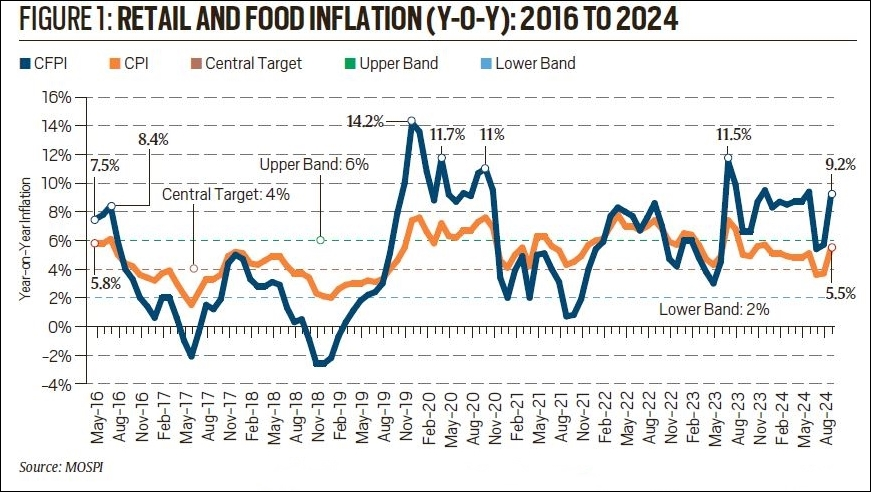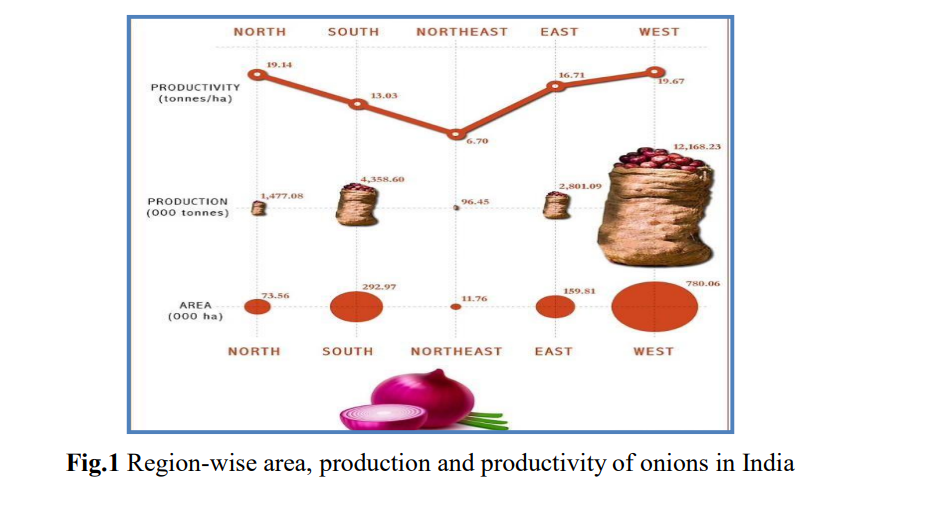Recently, September inflation, measured by the Consumer Price Index, surged to 5.5 %, while food inflation, crossed 9.2 %.
|
Components of CPI |
|||||
|
Group Code |
Sub-group Code |
Description |
Weights (Rural) |
Weights (Urban) |
Weights (Combined) |
|
|
1.1.01 |
Cereals and products |
12.35 |
6.59 |
9.67 |
|
|
1.1.02 |
Meat and fish |
4.38 |
2.73 |
3.61 |
|
|
1.1.03 |
Egg |
0.49 |
0.36 |
0.43 |
|
|
1.1.04 |
Milk and products |
7.72 |
5.33 |
6.61 |
|
|
1.1.05 |
Oils and fats |
4.21 |
2.81 |
3.56 |
|
|
1.1.06 |
Fruits |
2.88 |
2.90 |
2.89 |
|
|
1.1.07 |
Vegetables |
7.46 |
4.41 |
6.04 |
|
|
1.1.08 |
Pulses and products |
2.95 |
1.73 |
2.38 |
|
|
1.1.09 |
Sugar and Confectionery |
1.70 |
0.97 |
1.36 |
|
|
1.1.10 |
Spices |
3.11 |
1.79 |
2.50 |
|
|
1.2.11 |
Non-alcoholic beverages |
1.37 |
1.13 |
1.26 |
|
|
1.1.12 |
Prepared meals, snacks, sweets etc. |
5.56 |
5.54 |
5.55 |
|
1 |
|
Food and beverages |
54.18 |
36.29 |
45.86 |
|
2 |
|
Pan, tobacco and intoxicants |
3.26 |
1.36 |
2.38 |
|
|
3.1.01 |
Clothing |
6.32 |
4.72 |
5.58 |
|
|
3.1.02 |
Footwear |
1.04 |
0.85 |
0.95 |
|
3 |
|
Clothing and footwear |
7.36 |
5.57 |
6.53 |
|
4 |
|
Housing |
- |
21.67 |
10.07 |
|
5 |
|
Fuel and light |
7.94 |
5.58 |
6.84 |
|
|
6.1.01 |
Household goods and services |
3.75 |
3.87 |
3.80 |
|
|
6.1.02 |
Health |
6.83 |
4.81 |
5.89 |
|
|
6.1.03 |
Transport and communication |
7.60 |
9.73 |
8.59 |
|
|
6.1.04 |
Recreation and amusement |
1.37 |
2.04 |
1.68 |
|
|
6.1.05 |
Education |
3.46 |
5.62 |
4.46 |
|
|
6.1.06 |
Personal care and effects |
4.25 |
3.47 |
3.89 |
|
6 |
|
Miscellaneous |
27.26 |
29.53 |
28.32 |
|
General Index (All Groups) |
100.00 |
100.00 |
100.00 |
||
|
Consumer Food Price Index (CFPI) |
47.25 |
29.62 |
39.06 |
||
In September 2024, vegetable inflation contributed a staggering 63 % to the food inflation (CFPI), with year-on-year price increases of 42.4 % for tomatoes, 66.2 % for onions, and 65.3 % for potatoes.


|
Status of TOP production in India |
|
Cold storage for potatoes is concentrated in Uttar Pradesh, while Maharashtra dominates onion storage, highlighting the need for a more distributed network.